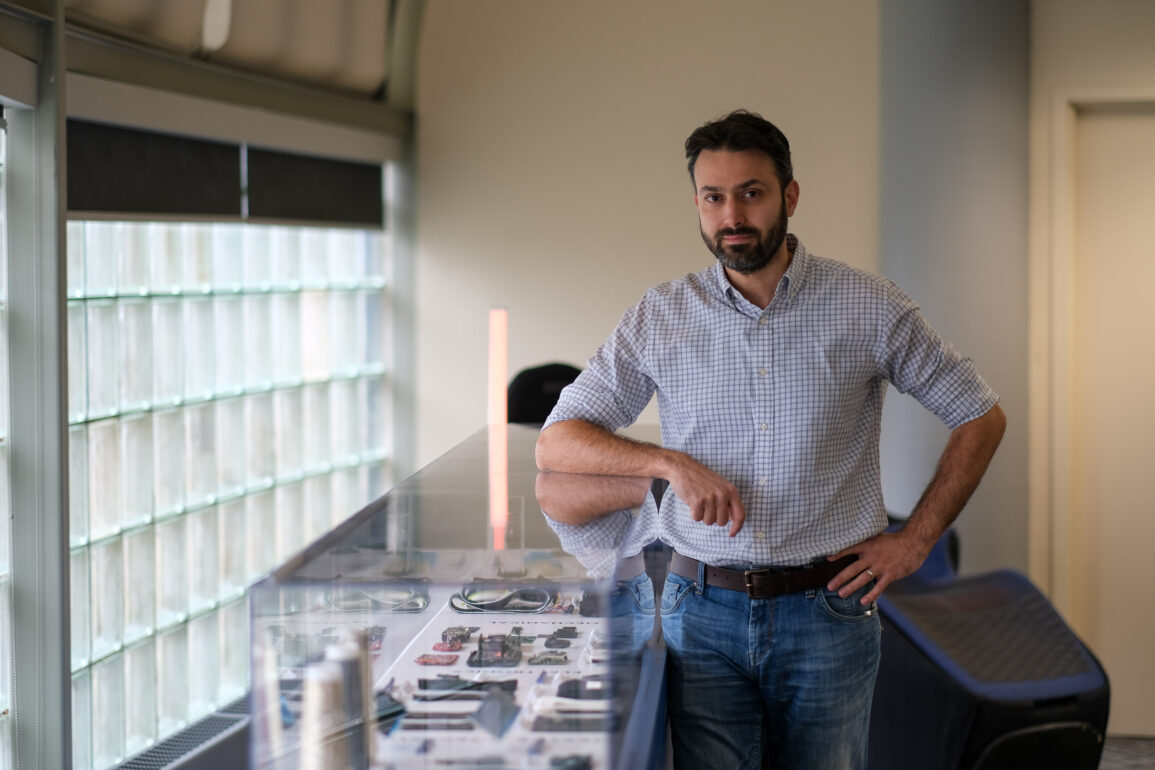In an era where wearables are becoming increasingly ubiquitous, Myant stands at the forefront of innovation, revolutionizing the healthcare landscape with their cutting-edge Textile Computing™ technology. With a mission to enhance connectedness through textiles, Myant is leveraging the power of data-driven insights to transform the way we monitor and manage our health.
At the helm of this groundbreaking endeavour is Milad Alizadeh-Meghrazi (PhD), Vice President of Research, Development, and Partner Integration at Myant. In a recent interview, Milad shared insights into the company’s specialized focus and the transformative potential of Textile Computing™ in healthcare.
Textiles as the Medium of Connectedness
“Myant is a technology company focused on connectedness, with textiles serving as a key medium,” Milad explains. “By utilizing textiles for data acquisition and communication, we enable the creation of a digital representation of individuals, facilitating the concept of quantified self to gain insights into personal health and behavior.”
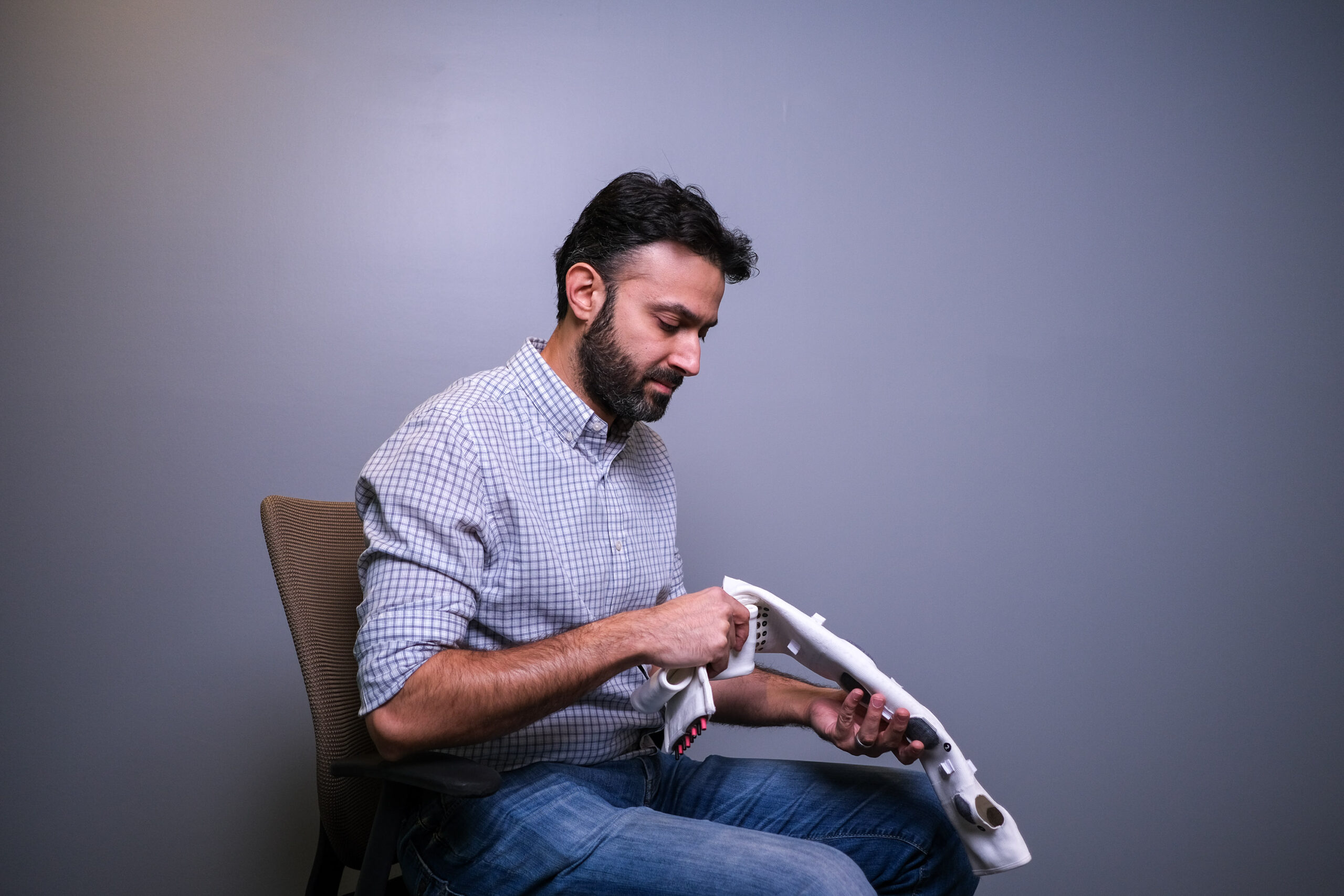
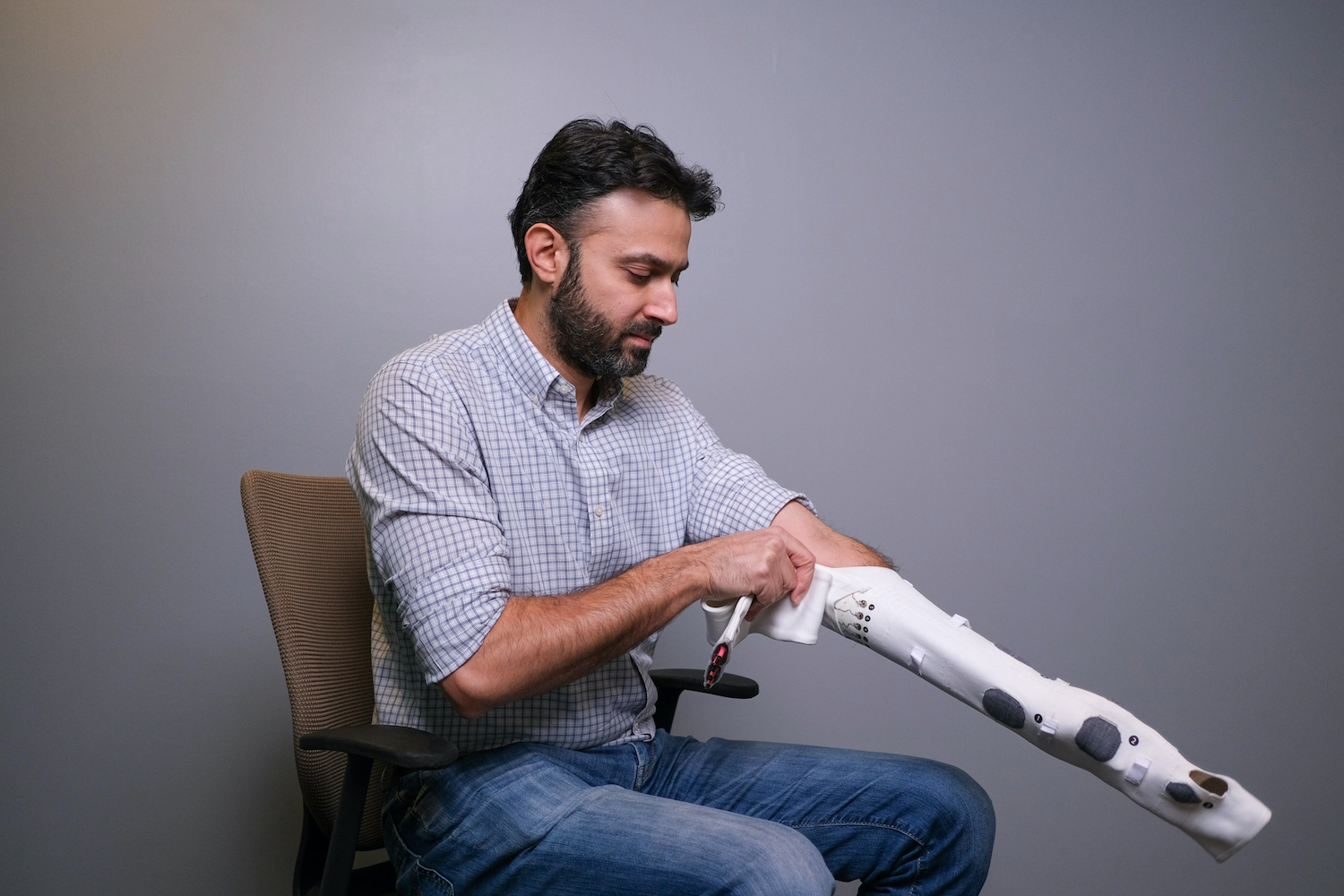

The integration of textiles with computing capabilities has paved the way for a new frontier in healthcare innovation. From augmented/virtual reality applications to medical diagnostics and care management, Myant Textile Computing™ solutions are poised to revolutionize the way we interact with our environment and monitor our well-being.
“Smart textiles act as platforms for integrating medical devices or sensors, allowing for the extraction of valuable insights into an individual’s physical and cognitive states.” Said Milad.
The sheer breadth of data that can be captured by users of smart textiles encompasses quantitative metrics in biochemistry, biomechanics, electrophysiology, and hemodynamics. This can be paired with semantic and qualitative inputs from users which can lead to personalized and population health management, early disease detection and interventions, and behavioural insights and patient engagement. The goal at Myant is not only to collect this data but to analyze it with precision, providing actionable insights into individuals’ health and well-being.
Myant’s flagship products is the Skiin, an innovative device that integrates textiles based sensing capabilities to provide insights into an individual’s physiological state. From monitoring electrocardiogram (ECG) signals to tracking movement and temperature, the Skiin smart textile offers a holistic approach to virtual health monitoring.
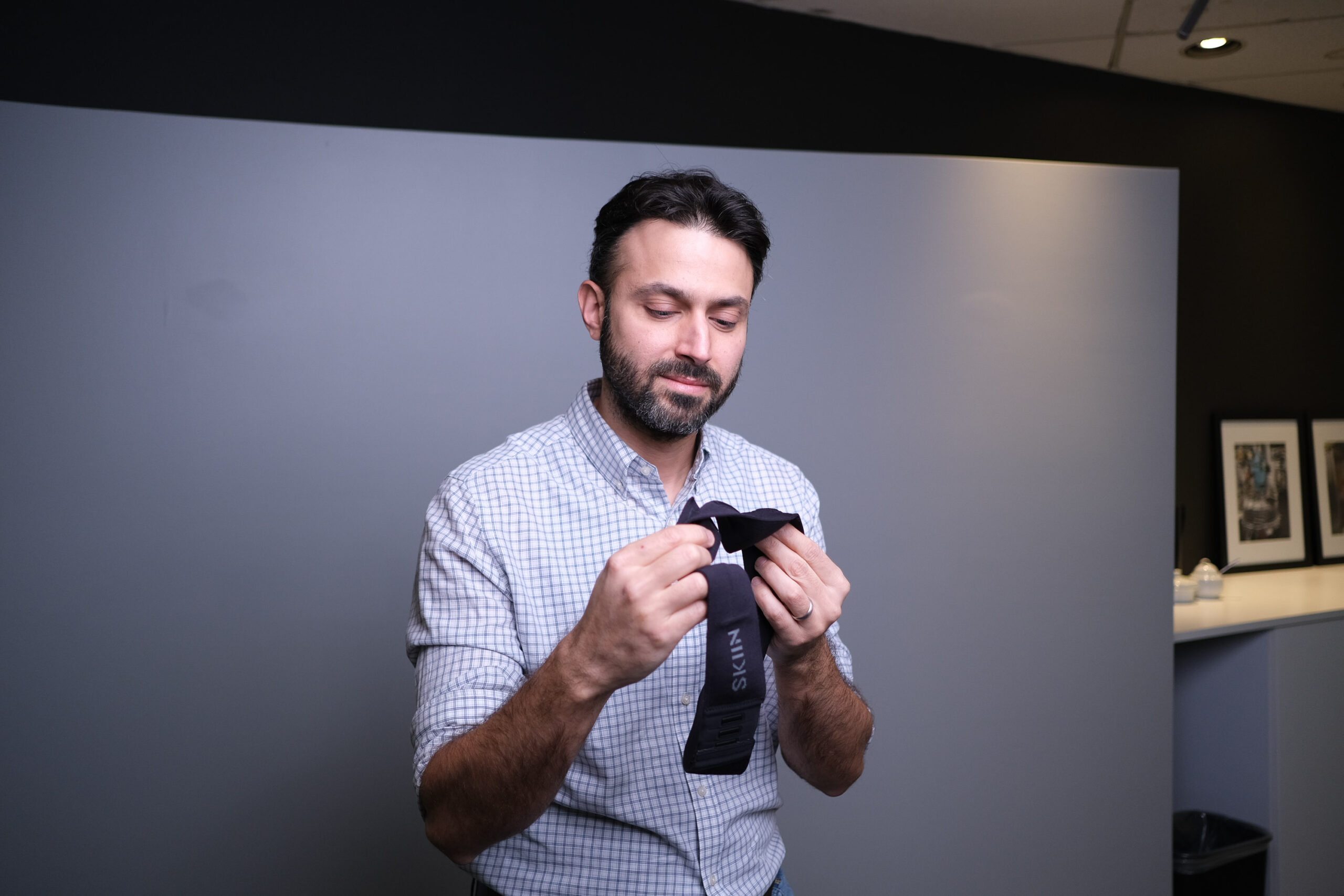
“Our goal is to transition from capturing a snapshot, to creating a continuous, dynamic, evolving narrative—a cinematic representation of an individual’s health journey,” Milad remarks. By deciphering the intricate connections between different physiological signals, Myant aims to empower individuals to take proactive control of their health.
Balancing Research and Partnerships
“My role encompasses two main responsibilities,” Milad explains. “Firstly, leading the development of Textile Computing™ technologies, particularly focusing on medical applications in remote monitoring and chronic care management. Translating technologies into applied solutions and products is a key part of this responsibility. Secondly, facilitating partnerships by identifying how our developed Textile Computing™ technologies can meet the needs of our customers.”
“Partnerships play a crucial role,” Milad emphasizes. “As companies seek to integrate Textile Computing™ technologies into their offerings, there’s a need for collaboration. Our expertise in textile computing allows us to adapt our sensor capabilities for various applications, from first responders’ stress monitoring to remote sleep monitoring services for obstructive sleep apnea and many others.”
Navigating this dual role requires a balanced and comprehensive approach, especially in the novel and multi-disciplinary industry of Textile Computing™. Milad’s unique perspective, shaped by his dual background in mechanical and biomedical engineering, enables him to deliver projects in accordance with engineering principles and meeting medical standards.
From Academia to Industry
With an undergraduate background in mechanical engineering from the University of Toronto, Milad’s academic journey took him on a path of interdisciplinary exploration that ultimately led him to participate in healthcare innovation.

“During my second and third years at U of T, I participated in co-op placements in computational fluid dynamics,” Milad recalls. “While these experiences provided valuable learning opportunities, I found myself seeking something more stimulating and aligned with my interests.”
It was during his undergraduate studies that Milad’s fascination with the intersection of engineering and biology began to take shape. Intrigued by the newly introduced biomedical engineering degree minor, Milad enrolled in the program, despite lacking a background in biology.
“My academic journey took an exciting turn when I crossed paths with Prof. Milos Popovic,” Milad explains. “For my undergraduate thesis, I focused on simulations of knee implants post-surgery, delving into the biomechanics of total knee arthroplasty.”
After completing his undergraduate studies, Milad pursued a master’s degree, conducting research with Prof. Milos Popovic and Dr. Cathy Craven on whole-body vibration therapy for sublesional osteoporosis in individuals with spinal cord injuries. This research involved designing the whole-body vibration system and implementing therapy protocols, as well as monitoring changes in muscle activity and blood biomarkers to assess the treatment efficacy.
After completing his master’s degree Milad joined industry, learning about the medical devices industry and market research of consumer products. “Transitioning into industry provided valuable insights and experiences,” Milad reflects. “But I felt a pull to return to academia and continue my studies.”
Milad was introduced to Tony Chahine, CEO of Myant, and they bonded over their shared passion for developing solutions that improve the quality of life for individuals affected by various medical conditions. This like-mindedness was the window of opportunity that allowed Milad to continue his academic aspirations and pursue a PhD focusing on developing smart textiles for electrophysiological monitoring. Milad partnered with Bastien Moineau and Ladan Eskandarian, two fellow researchers from U of T, who had expertise in clinical sciences and fibers/yarns respectively, creating a multi-disciplinary nucleus that sparked the scientific explorations. Leveraging his background in engineering and signal processing, Milad explored applications ranging from electrocardiography monitoring to functional electrical stimulation therapy and beyond.
“Throughout my academic journey, my mechanical engineering background has served as a solid foundation, it has allowed me to engage in interdisciplinary discussions and tackle complex challenges”, Milad notes. “I am grateful to my professors and Tony for their mentorship in academia and industry. I am also deeply grateful to the fellow researchers with whom I had the privilege of collaborating with and learning from on this journey. The achievements in realizing the potential of Textile Computing™ are the culmination of invaluable contributions from a collective, multi-disciplinary team.”
A Vision for the Future of Smart Textiles
Looking ahead, Milad is particularly optimistic about the trajectory of Textile Computing™, especially in light of the COVID-19 pandemic. “The healthcare challenges posed by COVID have highlighted the need for innovative solutions that can adapt to evolving healthcare delivery models,” he notes. “Textile Computing™ has the potential to revolutionize healthcare by providing cost-effective and accessible monitoring solutions.”
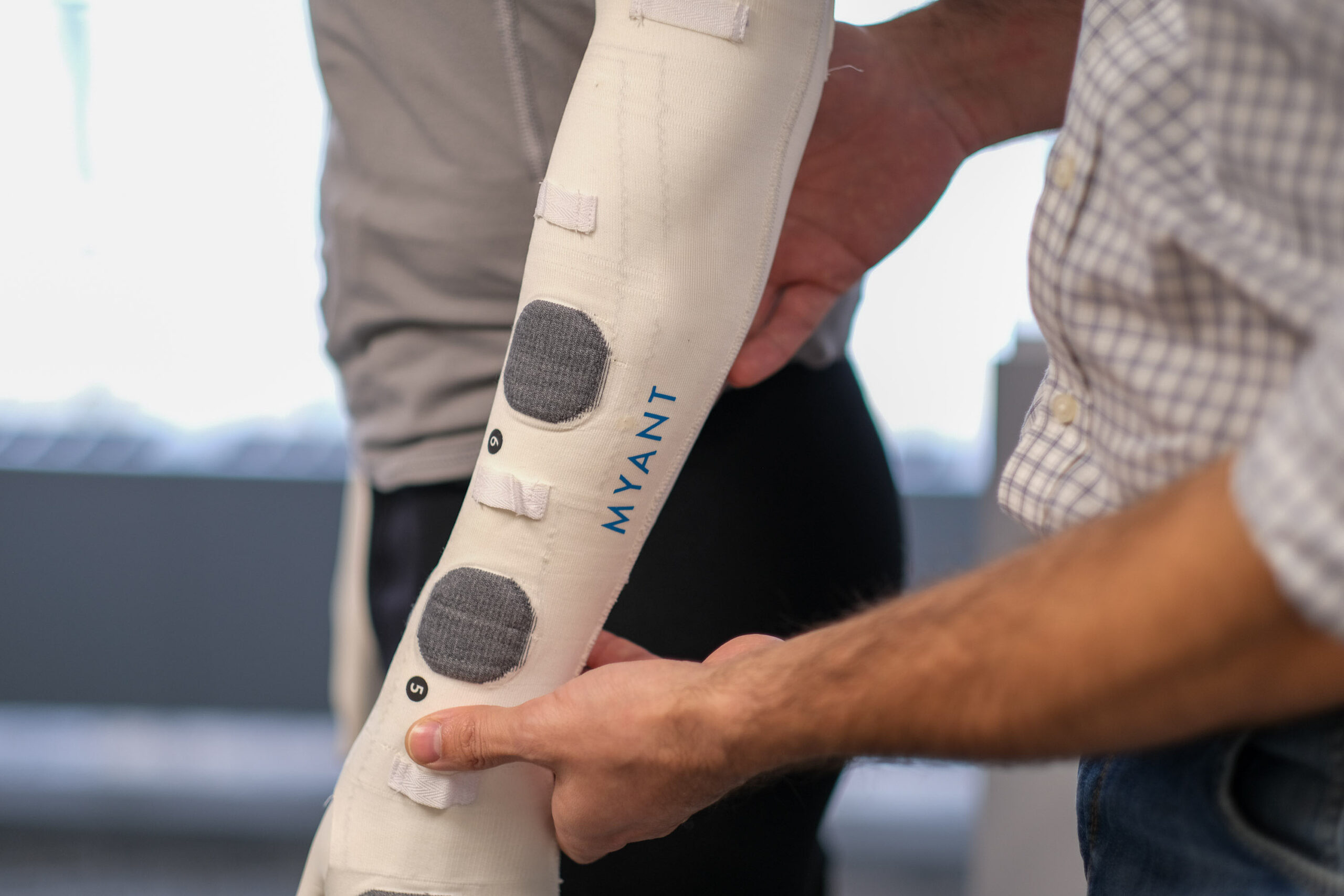
One significant trend Milad foresees is the integration of smart textiles into the broader digital health landscape. “As millennials and younger generations become increasingly proactive about health and wellness, there’s a growing demand for personalized, preventive healthcare solutions,” he explains. “Smart textiles offer a promising avenue for meeting this demand, as they can capture a wealth of physiological data in real-world settings.”
Moreover, advancements in augmented reality, virtual reality, and mixed reality are poised to complement the capabilities of Textile Computing™, enhancing the user experience and enabling new applications such as virtual health consultations and remote patient monitoring.
“As we continue to push the boundaries of Textile Computing™ technologies and its integration with other digital health solutions,” Milad concludes, “we’re poised to usher in a new era of personalized, proactive healthcare.”


